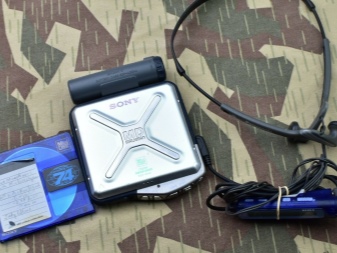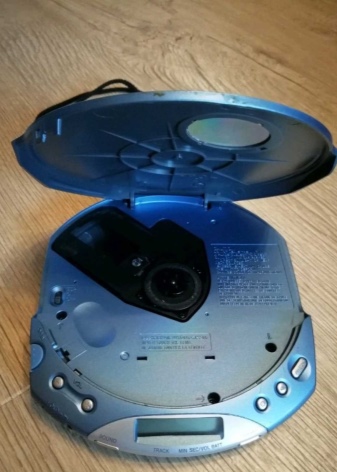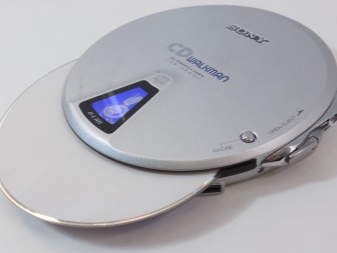CD players: history, features, model overview, selection criteria

The peak of popularity of CD-players came at the turn of the XX-XXI centuries, but today the players have not lost their relevance. There are portable and disc models on the market that have their own history, features and options, so that everyone can choose the right player.


History
The appearance of the first CD-players dates back to 1984, when Sony Discman D-50. The Japanese novelty very quickly gained popularity in the international market, completely replacing cassette players. The very word "player" went out of use and was replaced by the word "player".
And already in the 90s of the XX century, the first mini-disc player was released Sony Walkman Doctor of Medicine MZ1. This time around, the Japanese did not receive such widespread support in the American and European markets, despite the compactness and ease of use of mini-disc variants compared to CD players. The ATRAK system made it possible to rewrite from CDs to Mini Disk in digital format. The main disadvantage of the Sony Walkman Doctor of Medicine MZ1 at the time was its relatively high cost compared to CD players.
In the countries of the former USSR, there was also a big problem with the availability of modern computers that could read and write information on mini-disks.


Gradually, MD-players began to be superseded by the emerging MP3 players from Apple. In the early 2000s, it was talked about the fact that CD and MD players will soon be completely out of use, as it already happened with cassette players, which were popular back in the 60s of the XX century. However, this did not happen, players are very popular and in demand in the market due to their features, functionality and wonderful models, But first things first.

Peculiarities
For a mini-disc, as mentioned earlier, the ATRAK algorithm is characteristic. The bottom line is that sound information is read from the disk, except for redundant information. A similar mechanism is also typical for MP3. We can say that the internal processor of such players decompresses the mini-disc format into an audio stream that can be recognized by the human ear.
CD players are arranged a little differently, however, both compact and stationary CD players are easy to operate. The laser head reads information during the rotation of the CD, controlled by the buttons on the device or the remote control. This information is then converted to analog by the line-out connected to the input.


Thus, the construction of a simple CD player consists of at least two parts:
- optical system of "laser information reading", which is responsible for rotating the CD;
- sound conversion system (digital-to-analog converter, DAC): after the laser head collects digital content, it is transferred from the media to the line inputs and outputs, so that the sound is heard.


Varieties
CD-players can be single-unit, double-unit and triple-unit, which directly affects the sound quality.
Single-block
In single-block models, both components of the player (optical system and DAC) are located in one block, which slows down the work of reading digital and reproducing analog information. This has made single-box players obsolete.


Two-block
The single-block models were replaced by two-block models, in which the functional blocks of the device are interconnected, but located in different cases. The main advantage of such players is the presence of a more advanced and complex DAC., which works independently of another unit and increases the lifespan of such a device. But even a two-block CD-player does not exclude the appearance of so-called jitter in the process of using (an increase or decrease in the time intervals spent on converting information and playing sound).
The presence of space (interface) between blocks leads to frequent jitter over time.


Three-block
The jitter problem was successfully solved by the creators of three-block players, adding a third block (clock generator) to the two main ones, which sets the tempo and rhythm of sound reproduction. The clock generator itself is included in any DAC, but its presence in the device as another block completely removes jitter. The price of three-block models is higher than their one-block and two-block "comrades", but the quality of reading information from the carrier is also higher.

Criterias of choice
In addition to the type of block device, different models of CD players differ in the type of digital files supported (MP3, SACD, WMA), supported disk types, capacity and other optional parameters.
- Power. Refers to one of the most important parameters, since the volume of the device depends, first of all, on its power. For a noticeable improvement in sound quality, it is worth considering only options with a value of 12 W or more, because only such devices contribute to the reproduction of a sound range of up to 100 dB.

- Supported media. The most common CDs are CD, CD-R, and CD-RW. Many devices have a USB input, that is, they read information from external flash drives. Some players support DVD format. The best option when choosing a player will be one that supports several types of digital media, as this significantly increases the functionality. However, support for DVD-format in most cases is an overkill function, rather than necessary.

- Support for digital files... The basic set of supported formats is MP3, SACD, WMA. The more formats the player supports, the higher its price, which is far from always reasonable due to the possibility of converting one digital file to another. Perhaps the most famous and comfortable to use is the MP3 file, which supplants all others. However, there are adherents of the WMA format, and it is for them that there are appropriate devices on the market.

- Headphone jack... For many music lovers who love to immerse themselves in music, this parameter will be decisive when choosing a dream player. Most modern players (both expensive and cheaper) have a standard 3.5mm headphone jack and headphones are included.

- Volume range. Perhaps this is the most individual parameter. The higher the range, the more likely you are to distort the sound of the music being played. It is especially important to pay attention to this parameter in order to determine whether the sound quality deteriorates with increasing or decreasing the sound, which is often the case with cheap models.

- Possibility of remote control using the remote control, the quality of the display, the design of the device and the functionality of the set of buttons, their design and location, the weight of the player, which is especially important when choosing a portable player, the anti-vibration case, which is especially useful when listening to music at high volumes. Some buyers will truly appreciate the compact CD player, which runs on battery power, while others will prefer a stationary device with built-in power adapter and mains power. An important parameter is the ability to sync with other devices, for example, iPod and other Apple stereo equipment.

Model overview
Among stationary disc CD-players, the most popular models are Yamaha, Pioneer, Vincent, Denon, Onkyo.
Onkyo C-7070
One of the best players for lovers of high-quality sound and MP3 format.The models are presented in two colors: silver and gold. In the front part there is a tray for CDs of the usual CD, CD-R, CD-RW formats. However, their use is optional, because a device with a USB-input allows you to read information from flash drives. Also, the player has a separate headphone jack, many other gold-plated connectors, anti-vibration housing design, two audio processors Wolfson WM8742 (24 bit, 192 kHz), wide range of sound (up to 100 dB).
The main disadvantage is the inability to read DVDs, as well as the high, far from affordable price.


Denon DCD-720AE
Minimalist design, convenient and versatile remote control, 32-bit DAC for amazing sound, line-out and optical-out capability, headphone jack - not all the advantages of this model. The device has a well-implemented anti-vibration, USB-connector, support for Apple devices (unfortunately, only older models), the ability to search for music stored on the media in a folder.
The player reads CDs, CD-Rs, CD-RWs, but does not recognize DVDs. The disadvantages include a completely inconvenient display displaying very small characters, and a strange principle of operation when reading information from an external flash drive (the player stops playing a CD at the moment of connection).


Pioneer PD-30AE
The Pioneer PD-30AE CD-player has Front CD Tray, Supports MP3. Supported disc formats - CD, CD-R, CD-RW. The player has all the features for high-quality sound: a wide speaker range of 100 dB, low harmonic distortion (0.0029%), high signal-to-noise ratio (107 dB). Unfortunately, the device lacks a USB connector and does not support DVD format. But the player has the ability to remotely control using the remote control and 4 outputs: linear, optical, coaxial and for headphones.
Other important features: built-in power supply, gold-plated connectors, black and silver color scheme, 25-track program, bass boost.


Panasonic SL-S190
Cheaper, but very interesting Japanese devices are portable players of the Panasonic brand, made in the retro-vintage style. There is a rational and uniform sound supply, exclusion of the possibility of accidental keystrokes, displaying information about the track being played on the LCD-display. The player is able to play music in a random or programmed sequence, connect to sound systems, boost low frequencies thanks to the equalizer. Well, the main advantage is that The portable player can be operated either from batteries or from a power adapter.

AEG CDP-4226
Another budget model, this time an exclusively portable player with a microphone that works only from 2 AA + batteries. The display of the device shows the charge level, and the function buttons make it easy to work with the playback of tracks. Device supports CD, CD-R, CD-RW discs, has a headphone jack, works with MP3 format. The player does not have a USB connector, a remote control, but the small weight of 200 g makes it easy to carry the player with you.
It is popular with lovers of good sound quality for little money.


The Panasonic SL-SX289V CD player is shown below.






The comment was sent successfully.